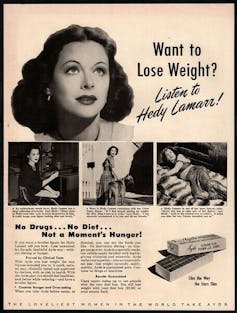

Dr Charlotte Boyce writes for the Conversation.
âI couldnât stop being sick. My side and my back were hurting and I just felt like my body was totally shutting down.â Thatâs how one woman described the side effects of weight loss injections sheâd bought off-label in a . Her experience is far from uncommon. Medics in the UK are even reporting that are ending up in A&E as a result of taking these products illicitly.
Concerns about the off-label misuse of drugs containing semaglutide (such as Ozempic and Wegovy) recently prompted NHS Englandâs medical director to warn that they shouldnât be seen as a âquick fixâ to get beach body ready. Speaking to the NHS Confederation, an organisation whose members provide services to the NHS, Stephen Powis (national medical director of NHS England) cautioned that these can be dangerous, and are unsuitable for people âwho are otherwise healthy who just want to lose a few poundsâ.
Originally developed as a treatment for type 2 diabetes, so-called âskinny jabsâ containing the appetite-suppressant semaglutide are . But online speculation about and of dramatic weight loss have fuelled their surge in popularity â and led people to seek these products out, even if they have no medical need for them.
While drugs containing semaglutide may be new, the feelings of body dissatisfaction that drive people to seek out such products is not. If we look back at magazines for young women and girls from the last 150 years, itâs clear that while fashions and norms may have changed, the pressure to achieve an idealised body type has remained constant. The willingness to try potentially harmful prescription drugs to attain this ideal has remained a constant, too.
As far back as the 19th century, the editors of a magazine called Girlâs Own Paper were regularly warning their teenage readers off . They characterised these products as âquack medicinesâ, and any form of dieting should âonly be attempted under the direction of a doctorâ.
Still, readers of the magazine continued to seek advice about potentially dangerous slimming treatments. One correspondent was strongly discouraged from taking âbromide of ammoniumâ â described by the editors as that âwill only do you harmâ. A popular sedative in the 19th century, bromide can have if taken over an extended period.
Another reader was told to be wary of the âlatest thingâ in â a hormone treatment called thyroglandin.
âLike all animal extracts, thyroid is a very powerful drug, and sometimes gives rise to very alarming symptoms,â the Girlâs Own Paper warned, adding that it should âonly be used for very marked cases of obesityâ. Writing for Cosmopolitan in 1910, Woods Hutchinson, a medical doctor, agreed, prolonged use of the drug was âliable to set up a serious and obstinate disturbance of the nervous system.â
Despite this, adverts for diet pills containing dried thyroid gland were a regular feature of young womenâs magazines by the 1930s â though they werenât always transparent about their ingredients. Ads for in Miss Modern, for example, claimed to contain âexactly the right quantityâ of âa world-famous correctiveâ that would help users to âslim without starvingâ. But the ads never specified what this miracle substance was.
Marmola advertised its product as safe and effective, with medically proven benefits. It claimed to be âprescribed by physicians everywhereâ and assured women âit is a folly to stay fat in these scientific daysâ. References to science were designed to reassure consumers but, in fact, slimming drugs in the late-19th and early-20th centuries were .
When the undertook a chemical analysis of various easily obtained âobesity curesâ in 1909, it found that alongside largely harmless substances such as powdered seaweed, pills like Marmola contained ingredients unsuitable for self-medication. These included dried thyroid gland and phenolphthalein (a potent laxative that was later because of its cancer risk).
Alongside scientific language, 20th century weight loss adverts often used endorsements to convince consumers of their effectiveness.

In the 1940s and 50s, the slimming brand Ayds used Hollywood stars to promote its âreducingâ products to women who aspired to a film star physique.
But perhaps these glamorous celebritiesâ body shapes felt unobtainable to ordinary women, as by the 1970s Ayds changed tack. They began using endorsements from âreal-lifeâ users instead â complete with .
Ayds contained , a local anaesthetic usually used to relieve pain and itching. The product supposedly reduced appetite by numbing tastebuds.
But other 20th-century weight loss products contained far more dangerous ingredients â including . A 1971 sang the praises of âfennyâ (fenfluramine), an amphetamine-based appetite suppressant that helped the author lose a stone in less than a month. The drug was later as an obesity treatment due to cardiovascular risk.
Today, lay down strict rules for promoting and selling slimming products. The further ensures that adverts for drugs comply with UK legal requirements. But with recent reports of social media ads promoting weight-loss drugs in ways that and âskinny jabsâ being , we might wonder whether todayâs young women are any safe than their 19th- and 20th-century counterparts.![]()
, Associate Professor in Victorian Literature and Culture,
This article is republished from under a Creative Commons license. Read the .
More articles from The Conversation...
Labour has been virtually silent on Britainâs neglected seaside towns â they need a national strategy
Guy Collender
6 August 2024
6 min read

Southport attacks: what we know about knife crime in the UK and how to solve it
Sue Roberts
5 August 2024
8

The UKâs Health and Safety at Work Act is 50. Hereâs how itâs changed our lives
31 July 2024
8

